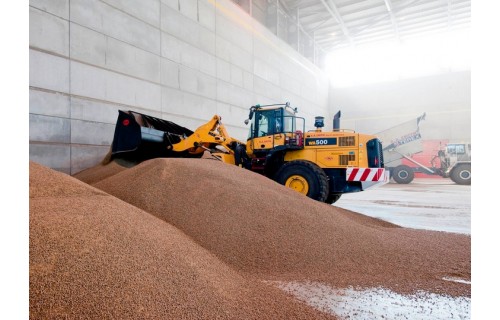Raw materials for producing pellets. Types and characteristics

Fuel pellets are solid biofuels that have since become an available and more ecological alternative to liquid and gaseous fuels. More and more companies, as well as private houses and municipal apartments, are switching to heating with pellets, because it is a much cheaper fuel that does not require the installation of an additional cleaning device. The increase in demand for pellets has led to an expansion of the range of raw materials from which pellets are produced. What raw materials do fuel pellet producers use today, apart from wood sawdust?
To begin with, it is worth noting that different raw materials are suitable for pelleting/granulating, processing and drying in different ways, and also have different combustion rates. In the case of different raw materials, pellets on the same equipment may be more/less dense, characterized by high or low density, weight and color. Many producers, in order to obtain high efficiency of the production line and a better appearance of the pellets, can add various additives to the mixture as a binding agent.
In Europe, the following requirements apply to the production of fuel pellets:
- particle size should be within the range of: 3-6mm in length and 1-2mm in thickness;
- the moisture content of the raw material should be 8-18% (requirements for pellets used in production);
- the ash content of fuel pellets after combustion should be from 1 to 3% for each class.
In case of deviations from the size requirements, industrial shredders are used, and dryers or humidifiers are used to regulate humidity. The standardization also includes a requirement regarding the composition of pellets, which should not contain chemicals.
What raw materials can fuel pellets be obtained from?
As already mentioned, the range of raw materials for pellet production is expanding. Currently, manufacturers produce fuel pellets not only from wood sawdust.
The following raw materials for fuel pellets are available:
- wood chips that have been obtained by processing wood;
- by-products (plating, strips) during woodworking;
- technological chips;
- low-quality wood products.
Wood shavings
Sawdust is considered the most qualitative and clean raw material for the production of fuel pellets, as it does not contain bark particles and other impurities that result in a high ash content during combustion. If necessary, sawdust or shavings are dried or moistened.
Side products
By-products come in different groups. The first group includes obladers, tips and cutting edges. The second group includes scraps and offcuts. This type of raw material is suitable for pellet production only after grinding into chips.
Wood chips
Fine wood chips are also an excellent raw material for the production of fuel pellets. To prepare such raw material, special shredders/chippers with screens are needed to obtain the desired particle size. The best option for production will be wood chips cleaned of bark and foreign admixtures.
Low quality wood products
Low-quality wood products can become a good raw material for pellet production provided they have not been treated with varnish and other chemicals. They should also be recycled into wood chips before compressing the pellets.
How different wood species affect the quality of pellets
Different wood species influence the characteristics of pellets, their combustion, heat dissipation, etc. To make pellets more durable, coniferous wood is used as a raw material due to its high content of lignin - a natural binding agent present in all coniferous trees. In addition, coniferous wood raw materials are better suited for pressing, which reduces the load on the equipment and its rapid wear. For these two reasons, manufacturers often choose sawdust and shavings from softwood. However, softwood pellets release less heat when burned than hardwood pellets. Moreover, they are lighter.
Pellet producers have found the perfect option - mixing sawdust from coniferous and deciduous trees. Such mixing offers many benefits:
- reduces the cost of the final product;
- does not affect quality if appropriate proportions are observed;
- makes pellets suitable for heating houses in classes A1 and A2.
Many consumers are convinced that only light pellets indicate high quality. It is believed that only an admixture of bark can give a dark shade. However, in practice, sawdust of dark tree species can be used for production, which affects the color, but does not affect the quality.
What raw materials apart from wood can be used for granulation
In order to protect forest resources, other alternative sources of raw materials for pellet production were discovered. Belong to them:
- waste after harvesting fields: straw, seed husks, peeled corn cobs;
- charcoal;
- cane;
- peat;
- bird droppings;
- waste paper.
Of course, alternative fuels have much higher ash rates. Some chemicals are also a disadvantage. However, in the first case, farmers use the ash after burning the mentioned types of raw materials as an excellent fertilizer. It has been proven that the resulting ash perfectly complements the mineral resources of the soil and promotes increased plant growth.
Peat pellets are more suitable for industrial complexes, but have already gained recognition in Poland. Their production and distribution increases from year to year. Before pellet production, the peat mass is dried.
Chicken droppings pellets are of great value to farmers and agronomists. This type of pellet is not very popular as fuel, but is widely used as fertilizer. There are many advantages: after preliminary heat treatment, all pathogenic microflora in the feces are destroyed. The result is an ideal fertilizer for fields and gardens. An interesting fact is that bird droppings pellets have a higher energy value than wood pellets. The market price is correspondingly higher.
Fuel pellets made from waste paper have a high energy value. The advantage is low cost and availability of raw materials.
Pellet production has proven to be beneficial for the environment and its natural resources: waste from the wood, agro-industrial, agricultural and other industries is used as raw materials. In this way, we obtain replenished fuel and waste supplies




